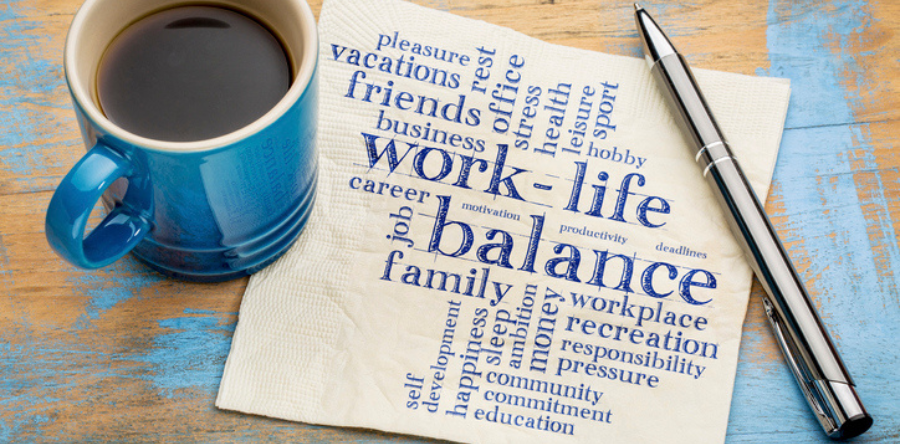1 min read
How to Create a Positive Workplace Culture from Afar
In June, the CEO Health + Safety Leadership Network hosted Innovative Concepts for Working Together in a Post-Pandemic World, a panel discussion...

Imagine feeling the way you do about all we've been through these last three years and at the same time feeling unwell – experiencing a litany of symptoms, sometimes acutely, including sleep disruption, fatigue, cardiac and respiratory issues, and brain fog.
This is what it is like for many people living with long COVID, and some of them may work for you.
In his presentation Post COVID Syndrome: More than just symptoms, at the National Safety Council’s SAFER Summit in December, Dr. Greg Vanichkachorn, MD, MPH, Senior Associate Consultant, Occupational and Aerospace Medicine shared data from the Mayo Clinic’s COVID Activity Rehabilitation Program (CARP) established to help patients struggling with Post COVID Syndrome and work issues.
There are:
95 million COVID-19 cases
9.5 million Post COVID Syndrome cases
2.85 million people are unable to function normally
The Mayo Clinic team has identified that conditions associated long COVID fall into four buckets – pulmonary, neurological, cardiology, and psychology. While there is an assumption that only individuals with acute infections are at risk of experiencing this Syndrome, Dr. Vanichkachorn says this isn’t necessarily the case. They are at a higher risk, but 52% of people in the program had less severe infections.
They’ve also found that even vaccinated individuals can develop Post COVID Syndrome, although their symptoms tend to be less severe, and most recover faster than those who were not vaccinated.
Among CARP participants, they’ve seen
Fatigue: 89%
Respiratory issues: 59%
Neurologic issues: 59%
Cognitive impairment: 45%
Sleep disturbance: 30%
Mental health side effects: 26%
While these are the most common symptoms, they’ve also observed:
Tinnitus
Prolonged loss of taste and smell
Hair shedding
Syncope
Sinus discomfort
GI Symptoms
“The key takeaway is that long COVID is much more than fatigue and shortness of breath. It seems like every day we are learning about more and more symptoms that can be associated with this condition.”
Long COVID can impair the ability to perform various tasks at work, from taking orders to operating in highly complex environments. While brain fog is not a medical term, many patients use this language to describe their challenges with short-term memory, finding words, taking directions, and multitasking.
One study Dr. Vanichkachorn shared that 41% of participants had reduced exercise capacity, which extends to limitations with everyday activities such as walking any distance, lifting or even working at a screen for extended periods.
In his presentation, he discussed the strong link between psychiatry, sleep, neurological issues, and safety at work.
Employees on sedatives may be more prone to accidents. Others experiencing sleep issues are at risk if they’re operating vehicles or heavy equipment or doing any work where they need to be fully alert to keep themselves and others safe.
Even the loss of taste and smell can affect safety. Employees who can’t smell may not detect fire, gas leaks, or exhaust fumes.
While they have seen some positive indicators, such as 20% of patients making a full recovery after experiencing severely limited function for 4-6 months, Dr. Vanichkachorn cautions that other studies show the prognosis for many is still concerning. A study at Weil Cornell Medicine showed that among patients assessed at 12 months:
41% were in worse health
44.2% had persistent symptoms
36.5% had trouble lifting/carrying groceries
38.1% had limited ability to climb a flight of stairs
22.1% had difficulty walking one block
Another study looked at employment among sufferers seven months after infection and found that the number of fully employed people dropped from 72% to 44%. In the same period, the number of people with reduced hours and those not working at all increased.
Dr. Vanichkachorn recommends a gradual return to work. Many participants have shared that employers have told them not to return to work until they are 100% better. On the surface, that seems like a supportive approach. However, it can come across to the employee that they can’t come back until they are able to do everything they need to do at work. And it is difficult to transition from not working at all to 100% productivity overnight.
He suggests starting with limited hours, such as starting with four hours of work, three days per week with a day of rest between. Or, if possible, allowing employees to work from home.
He stresses that successful recovery requires employee and employer engagement. “Don’t be afraid to be proactive and reach out to employees and ask what the latest is. Schedule regular touch points and let them know that you’re not reaching out frequently to push them back as quickly as possible, but that you’re supporting them through the process.”
There are four steps to the CARP program:
An in-depth interview
Evaluation for serious and or common conditions contributing to the symptoms
A targeted evaluation to see if conditions are consistent with those commonly associated with long COVID
Rehabilitation
In the interview phase of the program, Dr. Vanichkachorn says that patients often express that they feel abandoned. Because the medical community, family and friends don’t understand this condition patients are often told it is all in their head or that what they are explaining isn’t possible. As a result, they doubt themselves and feel guilty, which can lead to depression and anxiety, and even PTSD for some.
“Patients are starving for validation.” Dr. Vanichkachorn and his colleagues let patients tell their stories, listen with empathy, and let them know that this is a brand-new condition, and their symptoms are consistent with hundreds of other patients that the Mayo Clinic is helping.
“A biological pathology underlies this condition. We shouldn’t assume that everything associated with long COVID is a manifestation of anxiety. I remind patients that the mind and body work together. Just because we are treating an anxiety disorder doesn’t mean that everything they are experiencing is from anxiety.”
It is very discouraging for patients that the medical community is just beginning to understand this condition. There is no single objective test for treatment, no clear symptom groups, no appropriate test for assessing cognition, and no gold standard of treatment.
And, when they return to work, they don’t experience the support that others who return after an accident or recognized illness receive. On top of the stigma, many of their co-workers don’t even believe COVID exists, which can lead to hostility, bullying, and reprimands at work.
It can make recovery seem impossible.
However, there is an opportunity for leaders to build a culture of support in the workplace. Take stock of how programs and policies are being applied to these employees and observe how they are being treated when they return. If necessary, make changes and introduce new processes to ensure they receive the support they need to feel included and succeed.
As he closed the presentation, Dr. Vanichkachorn encouraged the audience to remember that just because something is unexplainable doesn’t mean that it doesn’t exist. He stressed that with open minds, we can get people the care they need so they can get back to work and resume their normal lives.
For more information, visit the Mayo Clinic’s Post COVID Recovery Blog.

1 min read
In June, the CEO Health + Safety Leadership Network hosted Innovative Concepts for Working Together in a Post-Pandemic World, a panel discussion...

3 min read
Leaders have been under enormous pressure over the past nine months. Employees are counting on you in ways they never have before. The reality or...

Burnout is a measurable concern that can take a dangerous toll on your employees and your business. However, with simple changes, such as...